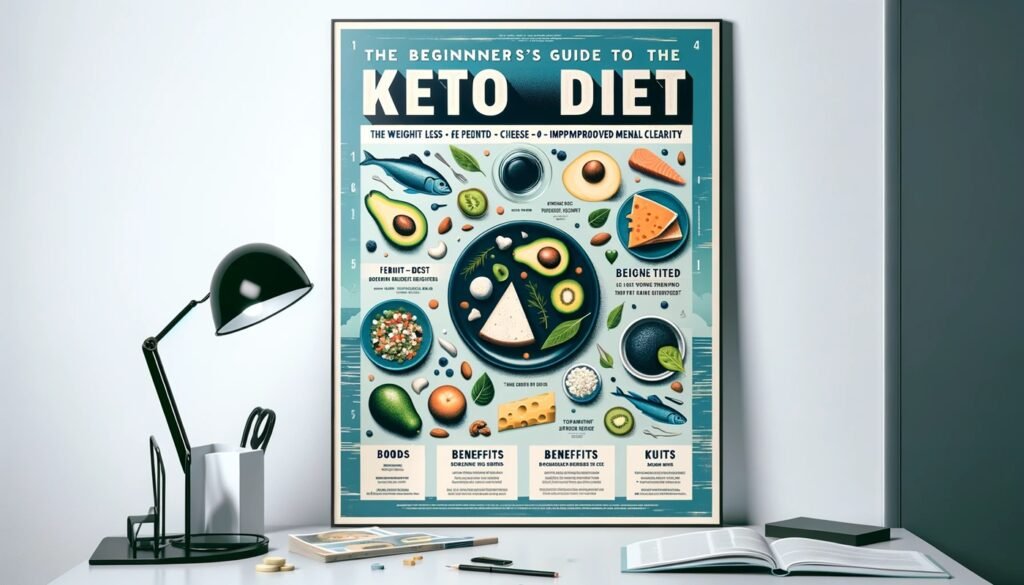
The ketogenic diet, commonly known as the keto diet, has gained significant popularity as a weight-loss strategy and a means to manage certain health conditions. This high-fat, low-carbohydrate diet aims to shift your body into a state of ketosis, where it burns fat for fuel instead of carbohydrates. This guide will delve into the essentials of the keto diet, providing beginners with the knowledge to start their keto journey.
Contents
What is the Keto Diet?
The keto diet involves drastically reducing carbohydrate intake and replacing it with fat. This reduction in carbs puts your body into a metabolic state called ketosis. In ketosis, your body becomes incredibly efficient at burning fat for energy. It also turns fat into ketones in the liver, which can supply energy for the brain.
Key Components of the Keto Diet
- Macronutrient Ratios: Typically, the keto diet consists of about 70% to 80% fats, 15% to 20% protein, and only 5% to 10% carbohydrates.
- Foods to Eat: Focus on high-fat, low-carb foods like meats, fatty fish, eggs, butter and cream, cheese, nuts and seeds, healthy oils, and low-carb veggies.
- Foods to Avoid: Reduce intake of sugary foods, grains and starches, fruit, beans and legumes, root vegetables, low-fat products, and unhealthy fats.
Benefits of the Keto Diet
- Weight Loss: By altering your body’s metabolism, the keto diet can help speed up weight loss.
- Improved Blood Sugar and Insulin Levels: This diet can significantly reduce blood sugar and insulin levels, which may help prevent diabetes or manage its symptoms.
- Enhanced Mental Focus: Ketones provide a steady source of energy for the brain, potentially improving focus and cognitive function.
Potential Challenges and Side Effects
- Keto Flu: As your body adapts to ketosis, you may experience flu-like symptoms, such as fatigue, headaches, and irritability.
- Nutrient Deficiencies: Limiting certain types of foods can lead to deficiencies in essential vitamins and minerals unless carefully managed.
- Social and Lifestyle Adjustments: The restrictive nature of the diet can make social engagements and dining out more challenging.
Starting Your Keto Journey
- Consult a Healthcare Provider: Before starting a new diet, especially one as restrictive as the keto diet, consult with a healthcare provider or a dietitian.
- Gradually Reduce Carbs: Ease into the diet by slowly reducing your carb intake over a few weeks.
- Plan Your Meals: Planning ahead can help you stick to the correct macronutrient ratios and avoid non-keto foods.
Conclusion
The keto diet offers many potential benefits, from weight loss to improved mental clarity. However, like any significant dietary change, it comes with challenges and may not be suitable for everyone. With the right preparation and mindset, you can determine if it’s the right approach for your health goals.
FAQs about the Keto Diet
Q: Is the keto diet safe for everyone?
A: While many people benefit from the keto diet, it’s not suitable for everyone. Individuals with certain health conditions like pancreatitis, liver failure, or fat metabolism disorders should avoid this diet.
Q: Can I ever eat carbs again on the keto diet?
A: While the keto diet is low-carb, you can incorporate carb cycling or have occasional carb refeeds as part of a more flexible approach once your body has adapted to ketosis.
Q: How do I know if I’m in ketosis?
A: Signs of ketosis include increased energy and focus, decreased appetite, and more stable moods. You can also use keto test strips to measure ketone levels in your urine.
Q: Are there long-term risks associated with the keto diet?
A: Long-term adherence to the keto diet may pose risks such as kidney stones, liver disease, and deficiencies in micronutrients. It’s important to discuss any long-term diet plans with a healthcare provider.